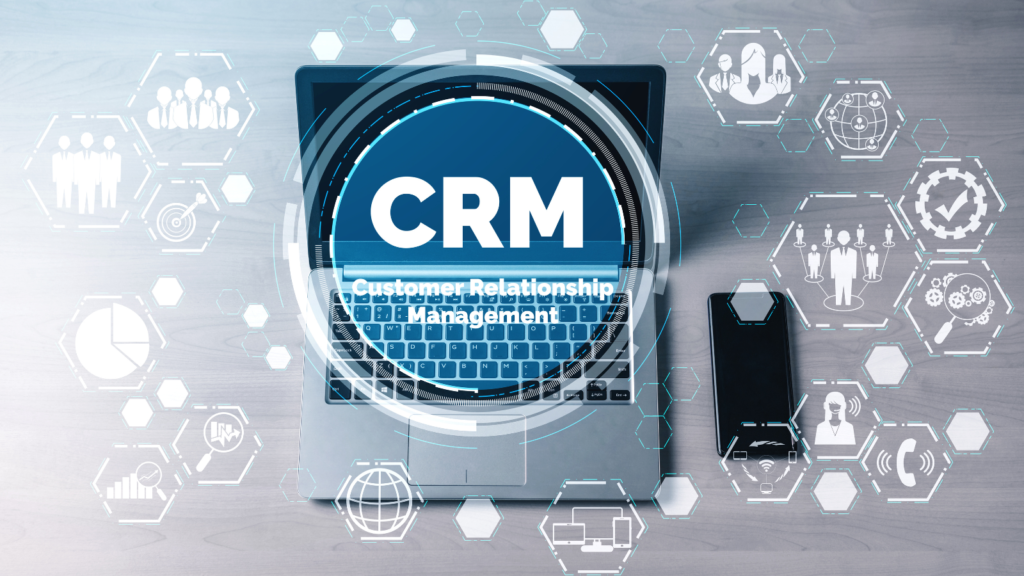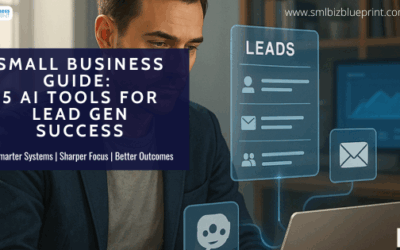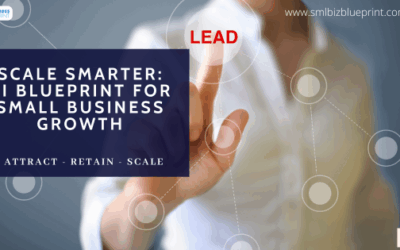A well-structured sales pipeline can make or break your success in the ever-evolving business world.
As a business owner, you understand that sales are the lifeblood of your company. That’s why it’s crucial to avoid the common mistakes that can hinder your sales pipeline’s effectiveness.

This guide will walk you through the ten most prevalent pitfalls, why they can be detrimental and how to avoid them.
Let’s begin this journey to optimise your sales pipeline and supercharge your revenue.
#1 Neglecting Lead Qualification
One of sales’s cardinal sins is failing to qualify your leads properly.
Imagine a fishing net with large holes; you’ll catch everything, including the unwanted debris.
Similarly, without a rigorous lead qualification process, your pipeline will be clogged with uninterested or unqualified prospects, wasting your sales team’s time and resources.
Example: A software company spent countless hours chasing leads that weren’t genuinely interested in their product. After implementing a robust lead qualification process, they increased their conversion rates by 30%.
Action
a. Implement a Lead Scoring System:
Create a lead scoring system that assigns points based on demographics, engagement, and fit with your product or service. This helps prioritise leads and focus efforts on those most likely to convert.
b. Define Ideal Customer Profiles:
Work with your marketing and sales teams to define your ideal customer profiles clearly. Understanding your target audience better allows you to identify leads that align with your business goals.
c. Regularly Review and Cleanse Your Database:
Review and clean your lead database to remove irrelevant or unresponsive leads. This ensures your sales team is working with a database of quality prospects.
#2 Poorly Defined Sales Stages
A lack of clarity in your sales stages can lead to chaos within your sales team.
Each salesperson may have a different understanding of where a lead stands in the pipeline, leading to miscommunication and missed opportunities.
Example: A real estate agency revamped its sales stages, clearly defining when a lead transitioned from “interested” to “ready to make an offer.” This streamlined their processes and resulted in a 20% increase in closed deals.
Action
a. Map Out Your Sales Process:
Create a visual map of your sales process, outlining each stage from lead generation to closing the deal. Ensure that everyone on your sales team understands and follows this map.
b. Set Clear Criteria for Each Stage:
Define specific criteria determining when a lead moves from one stage to the next. These criteria should be objective and measurable, preventing ambiguity.
c. Regularly Update and Improve Your Sales Stages:
Be open to revising your sales stages based on feedback and data analysis. This flexibility ensures that your pipeline remains aligned with your evolving business needs.
#3 Not Using CRM Software
Customer Relationship Management (CRM) software is the backbone of efficient pipeline management. Without it, you’re essentially navigating a labyrinth blindfolded.
CRM software helps organise, track, and manage leads, providing valuable insights into your sales performance.
Example: A small e-commerce business embraced CRM software, enabling them to segment their customer base effectively. This led to personalised marketing campaigns and a 15% boost in repeat purchases.
Action
a. Evaluate CRM Options:
Research and select a CRM software that fits your business needs and budget. Popular options include Salesforce, HubSpot, and Zoho CRM.
b. Provide Comprehensive Training:
Once you’ve adopted a CRM, invest in training for your sales team to ensure they can maximise its features. Well-trained users can utilise the CRM to its full potential.
c. Integrate Your CRM with Other Tools:
Integrate your CRM with essential business tools like email marketing software or analytics platforms. This streamlines data sharing and improves overall efficiency.

#4 Inconsistent Follow-Up
Consistency is key in sales, especially when it comes to follow-ups. Failing to nurture leads consistently can lead to them slipping through the cracks and declining conversion rates.
Example: A consulting firm implemented a follow-up schedule that ensured no lead went more than two weeks without contact. This simple change resulted in a 25% increase in their close rate.
Action
a. Create Follow-Up Templates:
Develop email templates and call scripts for different stages of the sales process. These templates help ensure that follow-ups are consistent and well-crafted.
b. Implement a Follow-Up Schedule:
Establish a clear follow-up schedule, specifying when and how often follow-ups should occur. This keeps leads engaged without overwhelming them.
c. Automate Follow-Up Reminders:
Use your CRM or a dedicated follow-up tool to automate reminders for follow-up activities. Automation reduces the risk of missed opportunities.
#5 Ignoring Sales Metrics
Data is your secret weapon in sales, and ignoring it is a grave mistake.
Metrics like conversion rates, average deal size, and sales cycle length provide the insights needed to make informed decisions and optimise your pipeline.
Example: A manufacturing company regularly analysed its sales metrics and discovered a significant drop in conversion rates. By promptly addressing the issue, they could reverse the trend and increase their close rate by 10%.
Action
a. Identify Key Metrics:
Determine which sales metrics are most relevant to your business goals. Focus on key metrics, such as conversion rates, to track consistently.
b. Regularly Analyze Data:
Set a schedule for data analysis to spot trends and anomalies. Regular analysis empowers you to make timely adjustments to your sales strategies.
c. Establish Benchmarks:
Compare your sales metrics to industry benchmarks to gauge your performance. Benchmarking can help identify areas where you may need improvement.
#6 Overloading the Pipeline
While it may seem counterintuitive, having too many leads in your pipeline can be detrimental. Your sales team can become overwhelmed, resulting in poor follow-ups and missed opportunities with high-value prospects.
Example: A tech startup reduced the number of leads in their pipeline by focusing on quality over quantity. This approach resulted in a 30% increase in their revenue.
Action
a. Prioritize Quality Over Quantity:
Shift your focus from the sheer number of leads to the quality of leads. Concentrate on leads that align with your ideal customer profile and are more likely to convert.
b. Implement Lead Nurturing:
Create a lead nurturing program to cultivate relationships with leads not immediately ready to buy. Nurtured leads can become valuable customers over time.
c. Regularly Review and Clean Your Pipeline:
Periodically assess your pipeline to identify and remove stagnant or unresponsive leads. This keeps your pipeline agile and responsive.

#7 Lack of Sales Training
Your sales team is the face of your business, and if they lack proper training, it can be detrimental.
Investing in ongoing sales training ensures your team has the necessary skills to engage and close deals effectively.
Example: A retail business invested in regular sales training sessions for its staff, leading to a 15% increase in upsells and cross-sells.
Action
a. Invest in Ongoing Training:
Commit to continuous training for your sales team. Provide resources, workshops, and coaching to enhance their skills and knowledge.
b. Role-Specific Training:
Tailor training to specific roles within your sales team, addressing the unique needs of sales representatives, account managers, and sales leaders.
c. Gather Feedback:
Encourage your sales team to provide feedback on their training experiences and areas where they need more support.
#8 Ignoring Customer Feedback
Your customers hold valuable insights into what works and what doesn’t. Ignoring their feedback can lead to a disconnect between your offerings and their needs.
Example: A restaurant listened to customer feedback and adjusted its menu based on popular requests. This improved customer satisfaction and led to a 20% increase in revenue.
Action
a. Implement Feedback Channels:
Establish easy-to-use customer feedback channels, such as surveys, online reviews, and direct communication with your support team.
b. Analyze Feedback Data:
Regularly review and analyse customer feedback data to identify trends and areas where you can improve.
c. Act on Feedback:
Commit to act on the feedback received. Use it to refine your products, services, and customer experience.
#9 Not Adapting to Market Changes
The business landscape is constantly evolving. Failing to adapt your sales pipeline to these changes can result in stagnation and declining sales.
Example: An advertising agency pivoted to focus more on digital marketing as consumer behaviour shifted online. This adjustment helped them maintain a steady flow of clients even during economic downturns.
Action
a. Stay Informed:
Keep your finger on the pulse of your industry and market. To stay updated, subscribe to relevant publications, attend conferences, and follow industry influencers.
b. Regularly Assess Market Trends:
Periodically assess how market trends may impact your business. Consider conducting market research to identify emerging opportunities.
c. Create a Flexible Pipeline:
Ensure that your sales pipeline is adaptable. Build in mechanisms to quickly adjust strategies and offerings in response to market shifts.

#10 Poor Communication Between Teams
Effective communication between your sales, marketing, and customer service teams is paramount. Silos and miscommunication can damage customer relationships and hinder your pipeline’s efficiency.
Example: A technology company implemented regular cross-departmental meetings to ensure everyone was aligned. This led to a 15% increase in customer satisfaction and repeat business.
Action
a. Hold Cross-Functional Meetings:
Schedule regular meetings involving sales, marketing, and customer service teams to ensure alignment and information sharing.
b. Use Collaboration Tools:
Implement collaboration tools and platforms that facilitate communication and document sharing among teams.
c. Encourage Feedback:
Create a culture of open communication and encourage team members to provide feedback on areas where collaboration can be improved.
FAQs
Q1: What is lead qualification, and why is it essential?
A: Lead qualification determines whether a lead is a good fit for your product or service. It’s crucial to avoid wasting resources on leads that are unlikely to convert, ensuring your sales team’s efforts are focused on the most promising opportunities.
Q2: How can CRM software benefit my business?
A: CRM software streamlines lead management, tracks interactions, and provides valuable insights into customer behaviour. It helps businesses make data-driven decisions, improve customer relationships, and optimise sales processes.
Q3: What are some key sales metrics I should track?
A: Important sales metrics include conversion rates, average deal size, sales cycle length, and customer acquisition cost. These metrics help you assess the health of your sales pipeline and make informed decisions.
Q4: Why is consistent follow-up crucial in sales?
A: Consistent follow-up keeps your business top-of-mind for potential customers, nurtures relationships, and increases the likelihood of closing deals. Without it, leads may lose interest or choose competitors.
Q5: How can I adapt my sales pipeline to market changes?
A: Regularly monitor market trends, consumer behaviour, and competitor actions. Adjust your pipeline by aligning your offerings with market demands and customer preferences.
Conclusion
An optimised sales pipeline is your ticket to success in the competitive business world.
Avoiding these ten common mistakes will streamline your sales processes, boost conversion rates, and ultimately increase revenue.
Remember, success in sales is not about luck; it’s about strategy and continuous improvement. So, take action today and start refining your sales pipeline for a brighter tomorrow.




